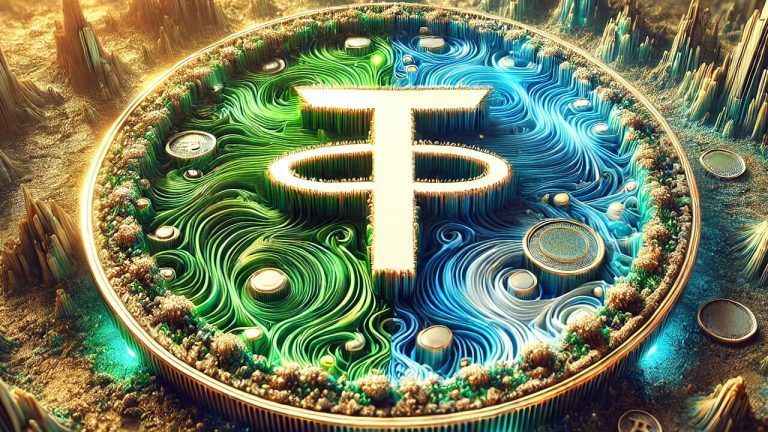
The integration requires no action from app developers and is currently live for all users.
United States-based cryptocurrency exchange Coinbase announced the full integration of Apple Pay into its Onramp app services.
Starting from Dec. 2, users logging into apps built with the Coinbase Onramp services will see the option to log in and conduct transactions via Apple Pay.
According to a blog post from Coinbase, app developers don’t have to do anything to enable the integration.

Some Coinbase users are airing frustrations at the region’s MiCA laws, which are forcing the exchange to stop offering yields on USDC in the European Economic Area.
Coinbase users in Europe shared frustrations over the region’s crypto regulations after the exchange said it is ending its yield offering on the dollar-pegged stablecoin USD Coin (USDC) for some users.
In a Nov. 28 email that multiple recipients posted on X, Coinbase said due to the European Union’s Markets in Crypto-Assets (MiCA) laws for stablecoins, it “will be sunsetting the USDC rewards program” on Dec. 1.
The change will affect customers in the European Economic Area (EEA), a 30-nation bloc that includes all 27 EU member states along with Iceland, Norway and Liechtenstein. The email said those eligible will still accrue rewards for the next two days until Nov. 30.
 A Washington resident has been charged with involvement in a $64 million cryptocurrency laundering scheme. He allegedly deceived investors, posing as an escrow agent, and transferred funds into his accounts. The funds were moved offshore or converted to cryptocurrencies such as bitcoin and ethereum via exchanges like Gemini, Bitstamp, Coinbase, and Binance. Investigators traced the […]
A Washington resident has been charged with involvement in a $64 million cryptocurrency laundering scheme. He allegedly deceived investors, posing as an escrow agent, and transferred funds into his accounts. The funds were moved offshore or converted to cryptocurrencies such as bitcoin and ethereum via exchanges like Gemini, Bitstamp, Coinbase, and Binance. Investigators traced the […]

The issues with liquidating the WEMIX stablecoin were not detailed, but the blockchain game producer has problems enough to choose from.
Wemix.fi, the decentralized finance platform for cryptocurrency Wemix, announced the suspension of its lending and borrowing services on July 30. This is just the latest twist in the story of the crypto behind the South Korean blockchain game developer Wemade.
Wemix.fi said the suspension of lending, borrowing, and liquidation functions was connected with “issues related to the liquidation of WEMIX$,” the platform’s USD-pegged stablecoin. Notice of resumption of services would be forthcoming, the announcement promised. Wemix.fi did not elaborate on the liquidation of its stablecoin.
The suspension of services comes a day after the news broke that former Wemade CEO Jang Hyun-kook had sold his shares in the company, driving the price of Wemix (WEMIX) to the year’s low of $0.94. The crypto’s price also took a beating in March when Jang resigned. Jang was said to be acting to reduce legal risk to the company after the crypto was tied to a political scandal last year.
 The stablecoin economy is experiencing renewed growth. Over the past week, the market capitalization of all stablecoins increased by $1.52 billion. The growth over the past seven days was primarily driven by tether (USDT), the largest stablecoin by market valuation, with its supply expanding by 1.2 billion coins. Stablecoin Economy Sees Growth Again Over the […]
The stablecoin economy is experiencing renewed growth. Over the past week, the market capitalization of all stablecoins increased by $1.52 billion. The growth over the past seven days was primarily driven by tether (USDT), the largest stablecoin by market valuation, with its supply expanding by 1.2 billion coins. Stablecoin Economy Sees Growth Again Over the […]

Tether’s USDT hegemony in the stablecoin market may shift as institutional investors chip into the crypto market.
Tether has long dominated the stablecoin sector thanks in large part to USDT’s status as the first fiat-backed stablecoin.
However, new serious competitors have entered the stablecoin market over the past several years, giving USDT (USDT) a run for its money.
Since 2024, the transaction volume of Circle’s stablecoin, USD Coin (USDC), has been on the rise.

The U.S. government’s arguments on stablecoins in an unrelated criminal case could bolster Binance’s position in its civil case with the SEC.
Cryptocurrency exchange Binance and former CEO Changpeng “CZ” Zhao have filed notice with the court in its case with the United States Securities and Exchange Commission (SEC) to establish the government’s position on stablecoins as a security.
In an April 25 filing in U.S. District Court for the District of Columbia, lawyers for Binance and CZ filed a Notice of Supplemental Authority, bringing the court’s attention to the U.S. government’s arguments in its criminal case against Mango Markets exploiter Avraham Eisenberg. In that case, prosecutors argued there was “no factual basis” for treating USD Coin (USDC) as a security or putting the question to a jury.
The Justice Department used the argument against USDC as a security in its case against Eisenberg, who was found guilty of fraud and market manipulation on April 18. Having the government claim that a stablecoin was not a security seemingly under the SEC’s regulatory reach could bolster Binance’s arguments in the civil case.

The exchange is optimizing operations after acquiring ErisX on the eve of crypto winter and expects to save millions.
Equity exchange network Cboe Global Markets has announced plans to reorganize its digital assets trading operations, including eliminating its digital spot market.
Cboe said it will remove digital asset derivative trading from Cboe Digital and integrate it into its Global Derivatives and Clearing businesses. The Cboe Digital Spot Market will close in the third quarter of 2024. The exchange will move cash-settled Bitcoin and Ether futures contracts from the Cboe Digital Exchange to the Cboe Futures Exchange in the first half of 2025, subject to regulatory review and “certain corporate approvals.”
The Cboe Digital clearing arm, Cboe Clear Digital, will be “aligned” with Cboe Clear Europe under the unified leadership of Cboe Clear Europe president Vikesh Patel. The exchange said in a statement that:

Traditional financial firms are increasingly connecting services, portfolios and operations with digital assets.
Traditional financial firms are increasingly connecting services, portfolios and operations with digital assets, taking advantage of the crypto winter to build and find a market fit for crypto-related solutions.
Recent examples include Deutsche Bank’s asset management arm, DWS, which announced a new venture with Galaxy Digital and Flow Traders to jointly issue a euro-denominated stablecoin. In another development, oil company Saudi Aramco signed an agreement with financial services firm SBI Holdings about a possible collaboration on digital assets and co-investment in SBI’s digital asset portfolios.
Meanwhile, in the United Kingdom, pension fund M&G has invested $20 million in the country’s first regulated Bitcoin (BTC) derivatives exchange, Global Futures & Options Holdings.

Recipients need to download a Coinbase Wallet to receive the funds, but the crypto exchange says they’ve simplified the process for less tech-savvy users.
A new feature from Coinbase Wallet allows for the transfer of crypto through a link that can be sent through some of the most popular social media sites and messaging apps as the crypto exchange looks to make its service accessible to a wider market.
“Users can now send money on any platform that they can share a link,” Coinbase said in a Dec.
There’s no payment fee when sending USD Coin (USDC), a U.S.
Send money anywhere you can send a link.
— Coinbase Wallet ️ (@CoinbaseWallet) December 5, 2023
Easily. For free.
⤷ https://t.co/CKyLu1wYEw pic.twitter.com/XX9YaZZEPm
Clicking the link will take the recipient to their device’s app store to download Coinbase Wallet — if not already downloaded — where they can create a wallet in one click, Coinbase noted.
If the funds aren’t claimed within two weeks, they will be returned to the sender.
Coinbase also made a “simple mode” for its wallet to help new and less savvy tech users which only shows basic functions like buying, sending, receiving and viewing assets.
Related: How to prepare for the next crypto bull market: 5 simple steps